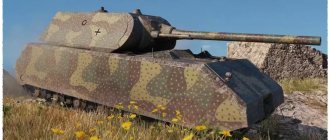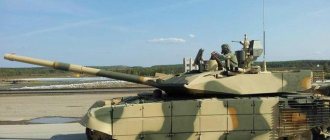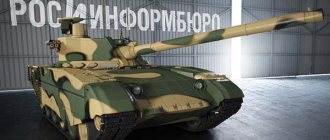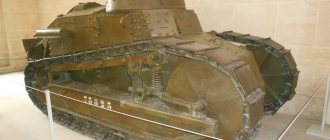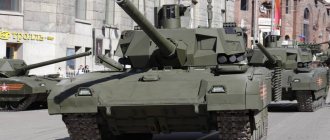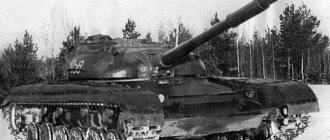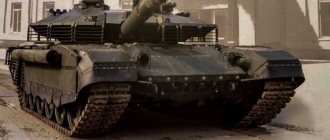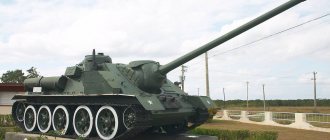From T-34 to “Armata”: the most famous domestic tanks
T-34. The legendary "thirty-four"
The medium tank of the Great Patriotic War period began to be produced in the USSR in 1940. During 1942–1947 it was the main tank of our army. In 1945 it was modernized into the T-34-85. The war became a kind of “acceleration zone” for this type of tank. In the post-war period, they were supplied to a number of friendly countries, one of the first being North Korea. It is worth noting that more than 70 years after the end of World War II, this tank continues to be used in some military conflicts. So, last year, a video appeared on the Internet in which the Yemeni army uses the Soviet T-34-85 tank in battle against Houthi rebels.
T-55. Tank for nuclear war
T-55 is a Soviet medium tank, created on the basis of the first serial post-war tank T-54. The world's first production tank capable of conducting combat operations under conditions of the use of nuclear weapons. In addition, the car was the first to have an active protection complex. In total, over 23 thousand tanks have been produced since 1958, which were delivered to many countries around the world, where they are still in service today. During the armed conflict in Syria, these tanks were used repeatedly.
T-64. Revolutionary loading
The T-64 is the first Soviet tank, which was the first in the process of its development to receive the designation “main”. The creation of the car began in the early 1960s, and production in 1962. Although outwardly the car was not much different from the T-55, in reality the difference between them was colossal. This concerned, in particular, the automatic loading mechanism of the gun (which made it possible to increase its rate of fire and exclude the loader from the crew), and a rangefinder sight, which made it possible to more accurately determine the distance to the target. In addition, the planetary turning mechanisms were transformed into onboard gearboxes created according to the same principle. There was virtually no traditional gearbox in the tank.
T-72. Workhorse of war
T-72 "Ural" is the most popular tank of the second generation. In total, more than 30 thousand cars have been produced since 1974. He took part in all armed conflicts of our time, starting with the Iran-Iraq war in 1980 and ending with the events in Ukraine (used by both sides of the conflict) and the war with militants in Syria. The modification of the T-72B3 tank received dynamic protection of the Kontakt-5 and Relikt explosive reactive armor, and a 2A46M-5-01 cannon. All these changes made it possible to bring some characteristics of the tank to the level of the T-90A.
T-90. "Vladimir" for export
T-90 "Vladimir" is a Russian main battle tank, a deep modernization of the T-72B tank. Between 2001 and 2010, the T-90 became the best-selling battle tank on the world market.
All tanks currently in service with the Russian army are subject to modernization to the T-90M Proryv-3 level. Their armament is a 125-mm smoothbore cannon, designed to fire 45 shots without recharging with an intensity of up to 10–12 shots per minute at a distance of up to seven kilometers.
T-14. Magnificent "Armata"
The newest Russian tank based on the Armata universal tracked platform was presented at the Victory Parade in 2015. This is the world's first production tank that implements the concept of “network-centric warfare.” It implies that the T-14 will be used as a reconnaissance, target designation and fire adjustment vehicle for self-propelled guns, air defense systems and an escort from T-90 tanks of its tactical unit. The tank has a medium-range circular Doppler AFAR radar, ultraviolet HD surveillance cameras with 360° circular coverage, capable of detecting the operation of vehicle engines by ionized gas exhaust. Another feature of the Armata is that the tank’s crew is in a so-called armored capsule, which significantly increases its survivability. At the moment, the tank is at the stage of factory testing, the procedure for military acceptance and elimination of deficiencies is underway.
WHO MADE THE BEST MODEL OF THE BEST TANK?IN FOURIER
The swift silhouette of the Soviet T-34-85 tank was remembered throughout the world for many years, becoming one of the symbols of the victory over Nazi Germany. One of the most popular tanks remained in service for a long time, periodically participating in battles in various hot spots of the planet: Korea, Cyprus, Hungary, Cuba, the Middle East, Vietnam, Angola, Somalia, Yugoslavia - this is not a complete list. I hope there is no need to dwell any longer on military glory and the accompanying interest of modellers, and so it is clear. Let's move on to comparing models in M 1:35, which have appeared in abundance on the shelves recently.
Model of the tank T-34-85 Layout", turret of the Navigator company
No matter how you tie them to the wheels (polyethylene does not stick to anything), it still looks implausible; moreover, the caterpillar strives to bend or tear off the guide wheel along with the crank, which serves precisely to tension the first one.
A way out of this confrontation between polystyrene and polyethylene was found by the Moscow company, which released its own version of the T-34-85, equipped with composite tracks, which immediately appeared in a separate box. A little later, diesel B 2 was also released, intended primarily for the T-34-85, since on other types of tanks, KV and IS/ISU, the engine units were mounted differently. Upon initial inspection, the “Makst” building was struck primarily by the absence of a MTO roof: it all consists of separate hatches and covers, the mesh above the blinds was really a mesh, the holes under which were already ready. The kit also includes thread for making towing cables (Tamiya and Zvezda have these parts made in plastic). The front fenders are again “square”, but made separately from the body. For some reason, modellers had a lot of complaints about the rear sheet, or more precisely, the joint between the upper and lower rear sheets; the parting line did not look up, as is more usual, but down. I can advise “experts” to study the materiel more diligently. In the city of Lipetsk there is a tank on a pedestal that exactly matches what “Maket” made, with the exception of the wheels. However, when mentioning “accuracy,” it should also be said that this model repeated Tamiya’s mistake with the body proportions. Failures include wheels that are larger in diameter and width, and are also cast with significant tightening. It's all the more disappointing that this contrasts sharply with the thin and elegant casting of the tracks and the overall "super-detailed" approach. For example, the bottom of the car is strewn with hatches and bolts, the balancer arms are cast separately from the body and are complemented by shafts with springs, which, however, are almost invisible. These details, by the way, are the only ones in the interior of the case (however, others do not have this).
The tanks, smoke bombs and their fastenings are made in detail, but rather roughly. Tower, so-called “composite type”, greatly distinguishes this set from all other “thirty-fours” in M 1:35. This variant appeared towards the end of the war and has not only a characteristic shape, but also spaced fan caps. The MK-4 periscopes are manufactured separately, i.e. they can be rotated, but their compliance with the original is questionable. The hatch on the commander's cupola is again single-leaf. The structure of the cast armor is shown rather roughly; in addition, the joint with the turret roof is indicated by a double (?) ledge. The breech of the gun is well made. The model is much more difficult to assemble, both because of the larger number of parts compared to the two previous kits and the need to fit them together.
The last “thirty-four” was rolled out by Dragon in the summer of 1998. The company's designers tried to outdo all possible competitors. The model has absorbed all the best experience and has virtually no serious errors. Judge for yourself: the built-in tracks, and the ridgeless ones, have holes for attaching additional lugs, which are also included in the kit, the bottom topography is fully reproduced, the roller balancers are made separately from the sides, there are also shafts with springs. The wheels are, in principle, the same as those of the “Maket”, but much better made, perhaps even overkill: The tires have stamps and cutting from the connectors of the form in which the rubber is vulcanized. Yes, they are almost invisible in real life! On the MTO, only the central hatch directly above the engine is open.
The mesh on the stern is imitated in the worst possible way from the available kits. In general, it’s understandable: cut it down anyway. The first sets were thrown into the market with such speed that the bolt heads on the round lux on the stern sheet were not made; the error was subsequently corrected. All the little details such as handrails, brackets, tow hooks, etc. are made elegantly, in great accordance with reality. The tower is perfectly textured. By the way, in terms of geometry it coincides with the Zvezda model almost 100%. The periscopes are divided in a unique way: the prism and the base are on the roof of the tower, and the fence and cover are glued on top, i.e. there are more parts, but you still can’t rotate them. The commander's hatch, as you probably guessed, is single-leaf, and the front wings of the fenders are “square”. (How many is possible? Just some kind of conspiracy! Judging by the photographs, there were not so many vehicles with such differences; most had a double hatch on the commander’s cupola and rounded wings, like on the earlier T-34 76.)
Dragon packaged the same plastic in two sets. The first one came out with the numbers and slogans of our cars, one of the last ones with a double mistake. Firstly, “Chervonny”, not “Chervonets”, and secondly, this inscription was carried by a tank that was one of the first to break into Minsk in the summer of 1944. The model will have to be remade for decals, since a year's difference in production could not but affect the appearance, and Dragon made the T 34 85, which appeared around April 1945.
I can’t help but mention the drawing on this box: the Russians are celebrating their victory, riding around broken-down Berlin in a tank with flying banners. The background of the composition is the Reichstag, blazing like Nif Nif's thatched house. Tankers and infantrymen are having fun in the traditional way - one of them is holding a bottle, and you can see it in their faces...
The second was a set that differed only in decals with “Chinese” and “Korean” three-digit numbers. After a short period of time, a third set appeared, equipped with new wheels from the T 34 and additional equipment that appeared during the 1960 modernization. In general, I like everything about the Dragon model except the price - in Moscow it’s already about 600 rubles.
Finally, a few general notes. All models refer to tanks produced at the end of the war, around the spring of 1945. The already mentioned “square” wings and the single-leaf hatch on the commander’s cupola can be attributed to another “family trait” of all models. The driver's periscope covers can only be glued in the closed position, since viewing devices are not included in any kit. If you don't have the money for the perfect Dragon, don't despair. A very worthy result can be achieved by purchasing, in addition to the “Stars” model, the “Layout” set as a source of spare parts. Even if you fork out money and decorate this “vinaigrette” with a set of photo-etched parts from the Czech “Eduard” or the Polish “Aber”, the savings are several times (!). I wish you creative success.
Photo by the author
T-34-85 from Tamiya
T-34-85
T-34-85 from Dragon
Table of contents

